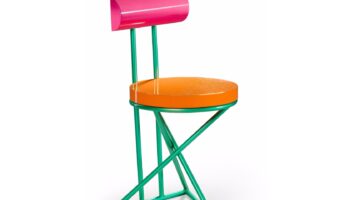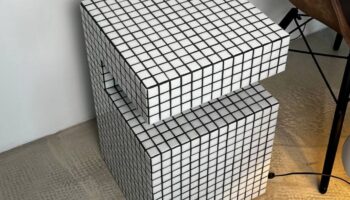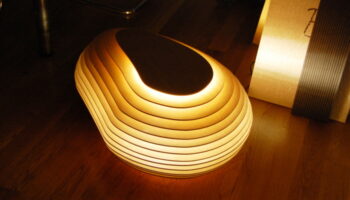Surreal Minimalism by David Pompa
seems to have inherited an aesthetics of contrasts. Born in Austria and raised in the old country and Mexico-two countries, that, on the surface, have very little in common-Pompa has an innate flair for the odd juxtaposition. Having graduated from Ferlach, Austria’s HTL in 2005 (the acronym stands for Höhere Technische Lehranstalten, or Higher Technical Institute), a school focused on Industrial design, Industrial technologies, and Weapon technologies, Pompa first went to work for Agip Petroleum, the Italian-based gasoline retailer that’s omnipresent in Europe: his “very innovative and emotional concept for petrol stations” is apparently still being scrutinized by industry big-wigs. He next went on to projects for renowned clock-maker Kieninger, for whom he created the wall clock Pallas Athene, as well as for GLOBO Lighting at the 2007 Salone del Mobile, designing the presentation booth for the release of the Alice line, which illuminated many a catwalk in Austrian fashion shows throughout the same year.
Surreal Minimalism. Designed by David Pompa Alarcón.
Now he’s gone on to a project which-if I may speculate-seems nearer and dearer to the designer’s very own internal workings. A grouping of chairs that meld objects of contrasting functionality into a single piece, the Surreal Minimalism line embraces the designer’s very own lineage of duality. Most of the pieces feature upholstered seats atop metal bases: nothing so striking about that; the shock value rather emerges from the referents of each component. Thus we see an Eames Lounge Chair (there you are again, oh enduring icon) upholstered in purest pink and done up on a pair of oversized wheels; a trapezoidal coffin-like box lined with plush navy upholstery and perched atop four miniaturized pewter porpoises; a “rocker” constituted of a base of pewter-cast human legs on dual slats and a bent wood seat covered in the oddly-chosen tones of peach and baby blue. These pieces each share a sense of bizarre whimsy that might be seen as a legacy from the mind of Tim Burton (think the resourcefulness of Pee Wee Herman and the understated glee of Vincent Price as the mad inventor in Edward Scissorhands), or Dr. Seuss’ best cast of joyful misanthropes.



Pompa envisions the collection as an antidote to workplace drear: “why do we always think about functions"¨when we talk about inclusive design? Interaction is often reduced to a functional basis; this collection is an approach to help objects and humans interact on an emotional level with the aim of stimulating creativity.”
The collection is certainly the antithesis of timidity, and if Pompa’s goal is to summon a subjective response he’s succeeded soundly. The question is whether the elicited emotion is creative enthusisam or abject horror. But, given the designer’s aesthetic antecedents-and, returning to the Germanic/Mexican theme, I’d add surrealistic visionaries like Frida Kahlo and Max Ernst to this list-the conflicted response is probably just what he’s after.




Leave a Reply